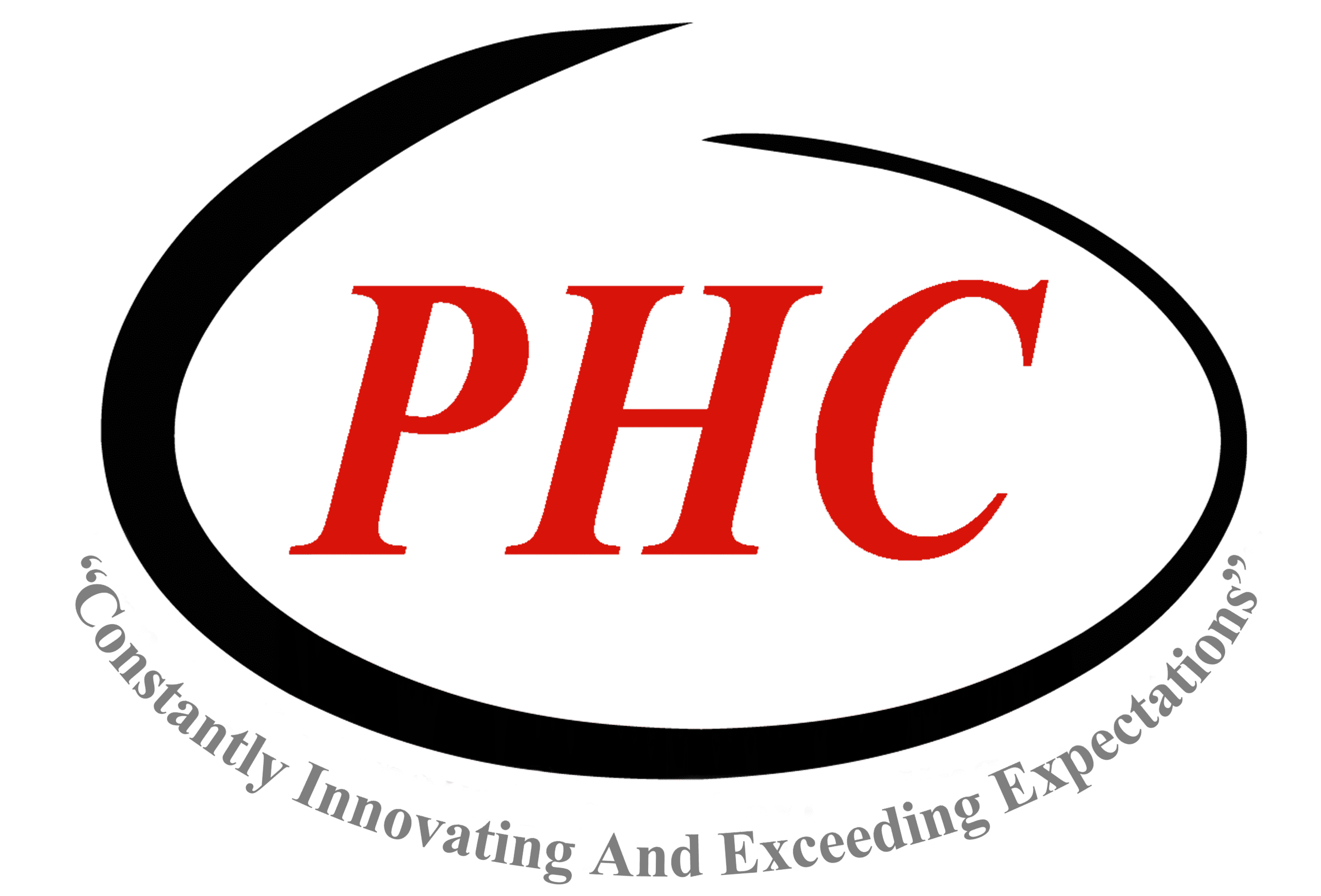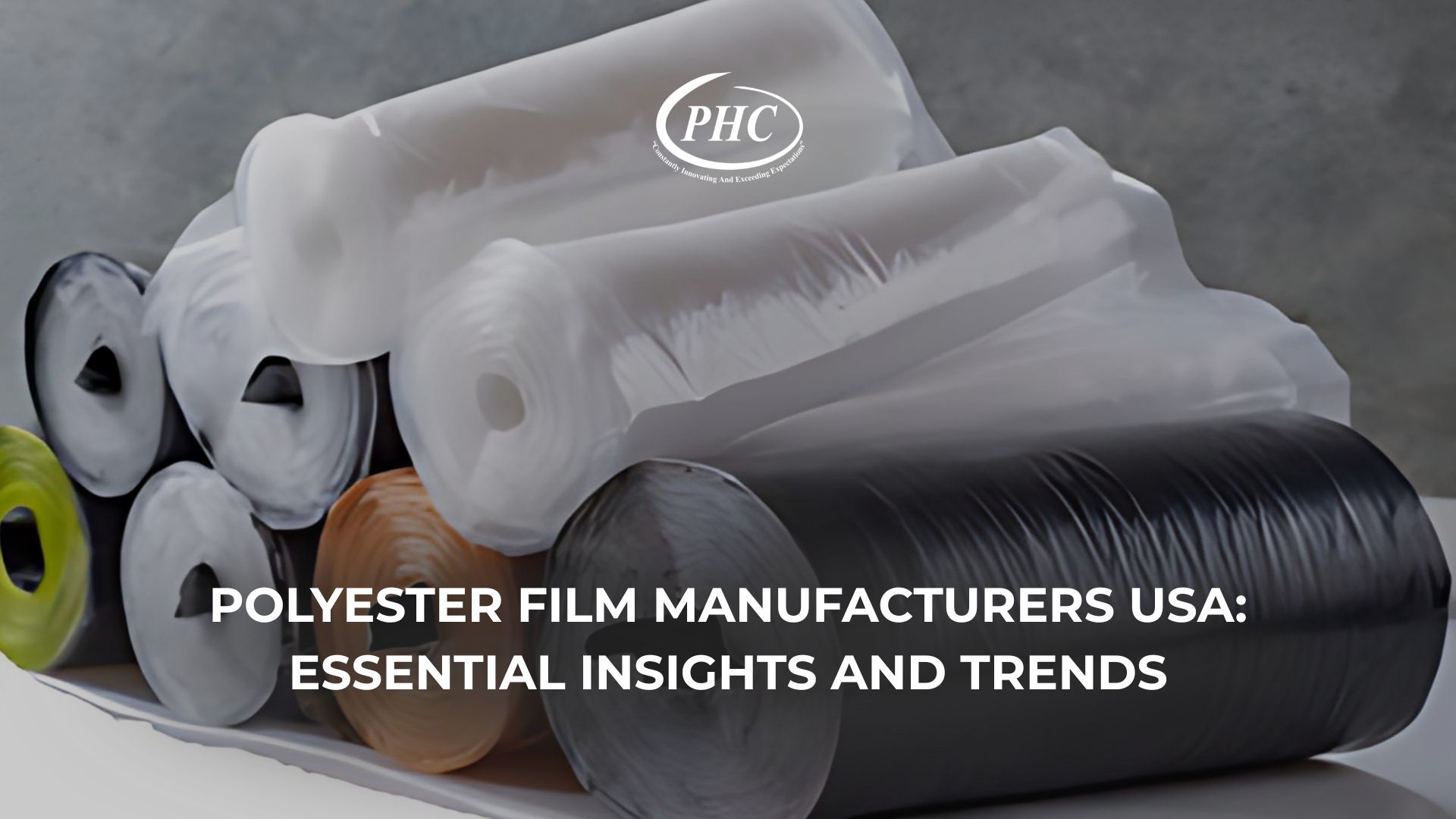What Defines High-Quality Polyester Films?
High‑quality PET films begin with consistent polymer quality and a process window that controls moisture, temperature, draw ratios, and tension. Among polyester film manufacturers USA, what separates dependable supply from frustration is the combination of morphology control (orientation + heat‑set), surface energy management, and format readiness (slit width, OD, core ID) that actually runs on your line.
Foundation: PET Chemistry, Orientation, and Heat-Setting
- PET chemistry: Polymerized from terephthalic acid (or DMT) and ethylene glycol; moisture management in drying prevents hydrolysis and IV loss.
- Biaxial orientation (BOPET): MD/TD stretch (commonly 2–4× per axis; illustrative) builds tensile modulus and dimensional stability (ASTM D882).
- Heat‑setting: Thermal stabilization after orientation reduces shrink, preserves flatness, and improves registration under seal/cure exposure.
- Curl & planarity: Balanced orientation mitigates curl and facilitates downstream laminating, printing, and die‑cutting.
Surface Engineering: Corona, Primers, and Functional Coatings
- Corona treatment elevates dyne levels (targeting >~38–44 dynes depending on ink/adhesive system) to promote wet‑out and anchorage; treatment decay must be managed by storage and timing. See corona‑treated PET.
- Primers and coatings:
- Acrylic primers for print/lamination bond strength.
- Heat‑seal layers with tailored SIT and hot tack windows for packaging speed.
- Anti‑fog to preserve visibility in chilled supply chains.
- Anti‑static for safer handling and reduced particulate attraction.
- Soft Matte/Hazy for glare control and diffusion.
- Metallization (aluminum vacuum deposition) and PvDC coatings for barrier tuning. Explore coating capabilities.
- Acrylic primers for print/lamination bond strength.
Portfolio Overview: Film Families That Solve Real Problems
Pilcher Hamilton’s lineup includes Anti‑fog, Anti‑static, Coated, Colored, Corona Treated, Clear High Barrier, Hazy, Heat sealable, High barrier, Metalized PET, PCR, Polymer pigmented, PvDC, Shrinkable, Soft Matte, Specialty Coated, Twistable, Tactical, Ultra Clear—available in gauges and formats engineered for throughput. Begin with All Products for a fast scan.
Manufacturing Processes in the USA
USA‑based production provides tight process control and shorter communication loops. For buyers comparing polyester film USA manufacturer options, in‑country capacity supports responsive engineering, documentation practices, and predictable replenishment.
Line Design 101: From Dryer to Winder
- Resin drying to protect IV and mechanicals.
- Extrusion & casting to a chill drum for uniform base web.
- MD/TD orientation sets modulus and clarity.
- Heat‑setting stabilizes morphology for shrink control.
- Edge trim & slitting to master widths; winding to target OD and core ID with clean roll structure.
- Slitting: Tight slit‑width tolerance, edge quality, consistent roll geometry.
- Sheeting: Flat, square sheets for kiss‑cut accuracy and overlay performance.
- Winding: Core choice (3″ or 6″), tension program, OD target aligned to your unwind/splice routines.
What Leading Polyester Film Manufacturers USA Do Differently
- Dimensional balance: MD/TD tension and heat‑set recipes that minimize curl.
- Surface energy permanence: Treatment + primers matched to dwell times.
- Barrier realism: OTR/WVTR targets referenced to conditions (e.g., ASTM F1249 for WVTR).
- Documentation & traceability: Clear lot data and CoAs that speed audits and approvals.
- Format readiness: Roll builds and slit plans matched to your equipment to reduce changeovers.
Spec-to-Ship Speed: Converting for 24-Hour Fulfillment
Pilcher Hamilton’s integrated approach and inventory strategy enable 24‑hour fulfillment (where feasible) on many stocked SKUs. The speed is unlocked by engineering the right format first—leveraging slitting, sheeting, and winding to your exact line spec, and lining up services from the capabilities overview.
Broad Applications and Case Studies
Packaging: Overwraps, Lidding, and Barrier Laminations
- Confectionery/Snacks: COF windows tuned for high‑speed wraps; heat‑sealable films for efficient sealing; glare control via Soft Matte/Hazy.
- Coffee/Dry Goods: Metallized PET or coated stacks to manage oxygen and moisture; match optics to branding.
- Chilled/Fresh: Anti‑fog faces preserve visibility; haze tuned for the desired appearance.
- Pharma Overwrap: Heat‑set BOPET for tight register; verify clarity and SIT in validation runs.
Labels, Release Liners, and PSAs
- Release systems: PET bases with silicone‑receptive chemistries (primered) for repeatable peel; sheeted or slit to spec.
- Label films: Treated/primered faces for robust ink anchorage and lamination bonds; COF control for application speed.
Graphics, Electrical, and Industrial
- Graphics/Overlays: Ultra Clear and Soft Matte/Hazy for visual quality; stable dyne for ink systems.
- Electrical & Electronics: Heat‑set PET for dielectric wraps and slot liners; narrow slits with uniform edges.
- Industrial: Carriers/spacers with modulus and flatness that protect process yield.
Mid‑page CTA — Make your next trial count
Browse the products and book a format consult through the services overview. For site coordination, use Locations or message engineering via Contact Us.
Property Table: Typical Ranges and ASTM Methods
Guidance only—use for screening. Confirm with samples under your conditions. References: ASTM D882 (tensile), ASTM D1003 (haze), ASTM D1894 (COF), ASTM F1249 (WVTR).
| Film Family / Type | Nominal Thickness (µm) | Haze % (D1003) | MD Tensile (MPa) (D882) | TD Tensile (MPa) (D882) | COF (D1894) | OTR (cc/m²·day) | WVTR (g/m²·day @ 38 °C/90%RH) | Notes |
| Ultra Clear PET | 12–100 | 1–3 | 150–220 | 170–250 | 0.3–0.6 | 70–150 | 2–5 | Optical clarity & lamination |
| Corona‑Treated PET | 12–100 | 1–3 | 150–220 | 170–250 | 0.3–0.6 | 70–150 | 2–5 | Adhesion‑ready dyne levels |
| Heat‑Sealable PET | 12–50 | 2–6 | 140–210 | 160–230 | 0.2–0.5 | 70–150 | 2–5 | Tunable SIT/hot tack |
| Metallized PET | 8–30 | 2–6 | 150–220 | 170–250 | 0.3–0.6 | <1–5 | <0.5–1.5 | High barrier/reflection |
| PvDC‑Coated PET | 12–36 | 1–4 | 150–220 | 170–250 | 0.3–0.6 | 0.5–5 | 0.3–1.5 | Balanced barrier; coat weight |
| Anti‑Fog PET | 12–50 | 2–6 | 150–220 | 170–250 | 0.2–0.5 | 70–150 | 2–5 | Condensation management |
| Anti‑Static PET | 12–100 | 2–6 | 150–220 | 170–250 | 0.2–0.5 | 70–150 | 2–5 | Handling & ESD mitigation |
| Soft Matte/Hazy PET | 12–125 | 10–70 | 140–210 | 160–230 | 0.3–0.6 | 70–150 | 2–5 | Diffusion/gloss control |
| PCR Content PET | 12–100 | 1–6 | 150–220 | 170–250 | 0.3–0.6 | 70–150 | 2–5 | Programmatic sustainability |
| Specialty Coated PET | 12–125 | 1–10 | 150–220 | 170–250 | 0.2–0.5 | 5–120 | 0.5–3 | Tailored adhesion/COF/optics |
Finding a Reliable Polyester Film Manufacturer Near Me
Choosing a partner is about de‑risking the path from sample to scale. If you’re searching “near me polyester films manufacturer” or “PET film manufacturer near me SC,” prioritize suppliers that can align material science, format, and logistics with your line realities.
Procurement Checklist: From Gauge to Roll OD
- End use (packaging, PSA/liner, graphics, electrical, industrial).
- Base film & gauge; web width; balanced MD/TD targets for registration.
- Surface: untreated vs corona‑treated; primer/coat selection (acrylic, heat‑seal, anti‑fog, anti‑static, matte).
- Barrier: OTR/WVTR goals + test conditions (e.g., ASTM F1249); clear vs metallized vs coated.
- COF: ASTM D1894 targets for machinability and stacking.
- Converting format: slit width tolerance, roll OD, core ID, winding pattern; or sheeting size/squareness/flatness.
- Documentation: lot traceability, CoA needs, sampling plan.
- Lead time: confirm 24‑hour fulfillment eligibility for stocked SKUs; coordinate via Locations and Contact Us.
Local Advantage: Why Greer, South Carolina Matters
- Shorter lanes reduce risk and variability.
- On‑shore engineering speeds spec iteration and corrective actions.
- Since 1904, Pilcher Hamilton’s institutional know‑how, combined with integrated converting, helps teams reach nominal speeds faster with fewer surprises.
- Start with the capabilities overview and product catalog to frame trials and purchase‑ready specs.
Future of Eco-Conscious Manufacturing
PCR Programs, Downgauging, and Circular Design
- PCR PET supports sustainability goals; blending/filtration preserve optics where needed.
- Downgauging leverages PET modulus to maintain performance at lower mass.
- Monomaterial strategies: PET‑dominant stacks can aid sortation in compatible recovery streams.
Designing for Recovery Without Sacrificing Performance
- Choose coating/primer systems with end‑of‑life in mind while meeting real‑world OTR/WVTR targets.
- Use slitting/sheeting/winding plans that minimize scrap; on‑shore fulfillment reduces emergency‑freight emissions.
FAQs
- Where is Pilcher Hamilton located?
At 850 South Buncombe Road, Greer, South Carolina. Plan logistics via Locations. - How long has Pilcher Hamilton served the USA market?
Since 1904, supplying value‑added PET films and integrated converting. - Which PET film families are available?
Anti‑fog, Anti‑static, Coated, Colored, Corona Treated, Clear High Barrier, Hazy, Heat sealable, High barrier, Metalized PET, PCR, Polymer pigmented, PvDC, Shrinkable, Soft Matte, Specialty Coated, Twistable, Tactical, Ultra Clear. - What services accelerate time‑to‑line?
Slitting, sheeting, winding, plus printing, die‑cutting, coating, corona treating, toll converting—see All Services. - Do you offer 24‑hour fulfillment?
Yes—where feasible for stocked configurations. Confirm availability through Contact Us. - Which ASTM tests should be referenced in my spec?
D882 (tensile/modulus), D1003 (haze), D1894 (COF), F1249 (WVTR). Always state test conditions. - How do I select gauge and finish?
Start with end‑use and equipment constraints; choose gauge, COF, dyne, and SIT accordingly, then validate with samples. - Do you supply metallized and coated barrier PET?
Yes—metallized and coated options (acrylic primers, matte, anti‑fog, anti‑static, heat‑seal). - Can Pilcher Hamilton convert my customer‑supplied web?
Yes—via toll converting (coordinate specs through All Services). - What information speeds quoting?
Gauge, width, COF target, dyne level, OD/core ID, slit/sheet tolerances, barrier goals, and volume cadence. - Do you support graphics/label programs?
Yes—Ultra Clear and Soft Matte/Hazy films; consistent dyne for ink anchorage; slit/sheet formats for quick trials. - How can I start a spec review?
Scan All Products and All Services; then set up time via Contact Us or Locations.
What format options are available for rolls and sheets?
Define slit width, tolerance, roll OD, core ID (3″ or 6″), splice policy; or sheet size, squareness, flatness through sheeting.
When you compare polyester film manufacturers USA, the edge often lies in format readiness, surface engineering, and rapid fulfillment. Since 1904, Pilcher Hamilton has supported converters, brands, and OEMs from 850 South Buncombe Road, Greer, South Carolina, with a deep PET portfolio—Anti‑fog, Anti‑static, Coated, Colored, Corona Treated, Clear High Barrier, Hazy, Heat sealable, High barrier, Metalized PET, PCR, Polymer pigmented, PvDC, Shrinkable, Soft Matte, Specialty Coated, Twistable, Tactical, Ultra Clear—and integrated slitting, die‑cutting, printing, coating, winding, sheeting, corona treating, toll converting. For many stocked SKUs, 24‑hour fulfillment (where feasible) helps teams move from trial to steady‑state production with fewer variables.
Plot your next steps: scan the product catalog and service capabilities, then schedule a consult via Contact Us and plan logistics through Locations. If your searches include “polyester film USA manufacturer,” “PET film manufacturer near me SC,” or “near me polyester films manufacturer,” align with a Greer‑based partner built for precision and speed.

